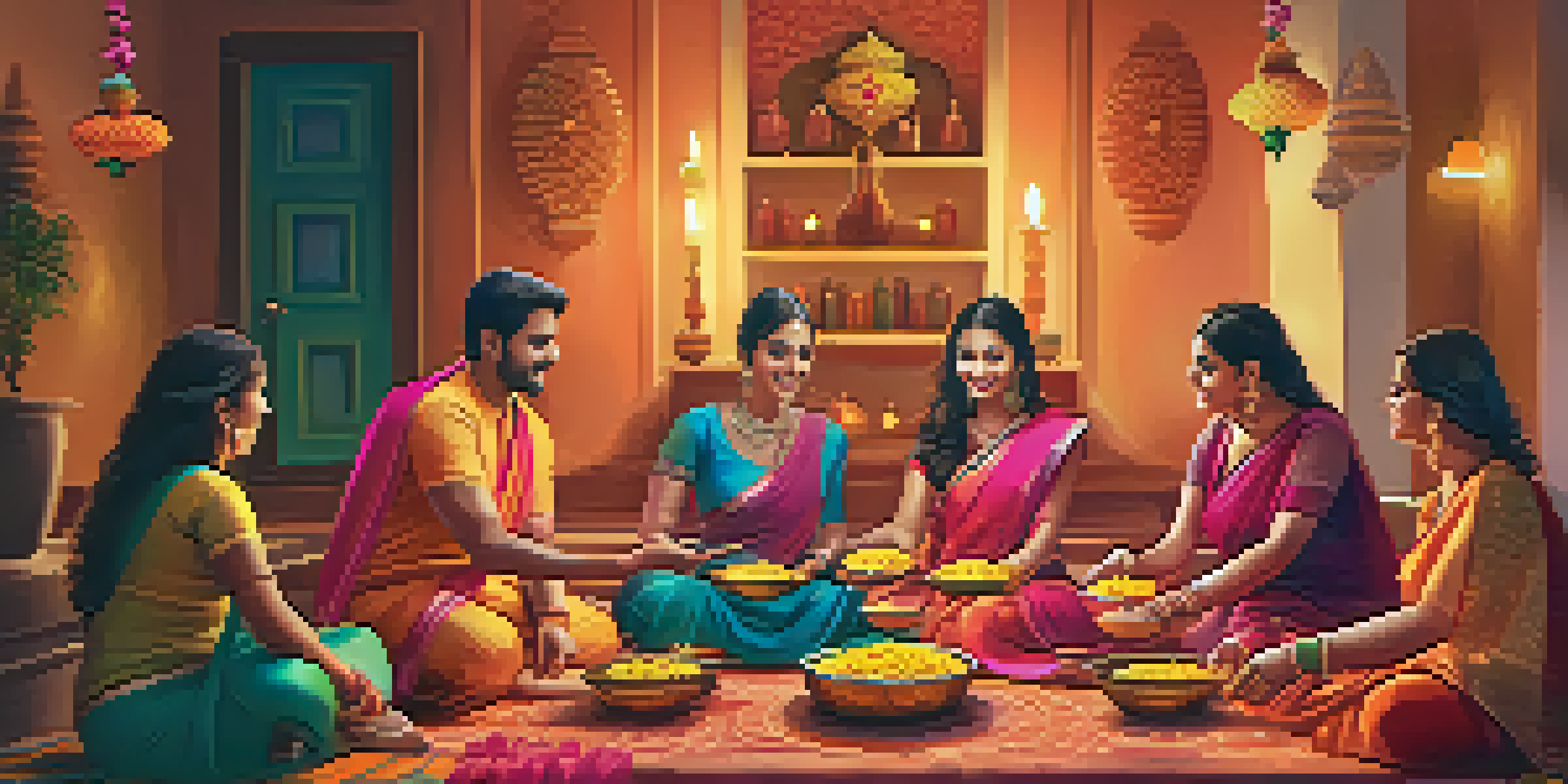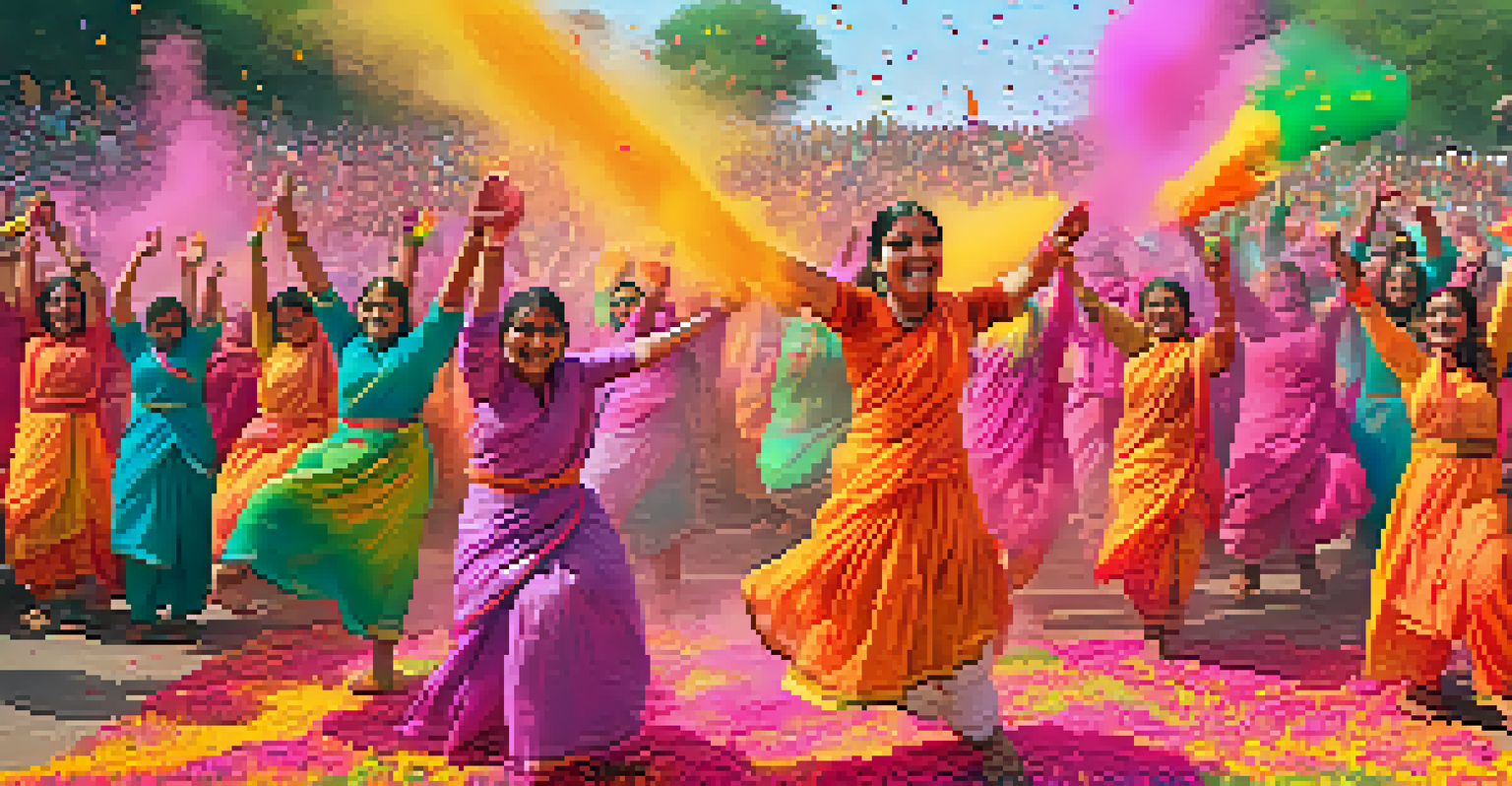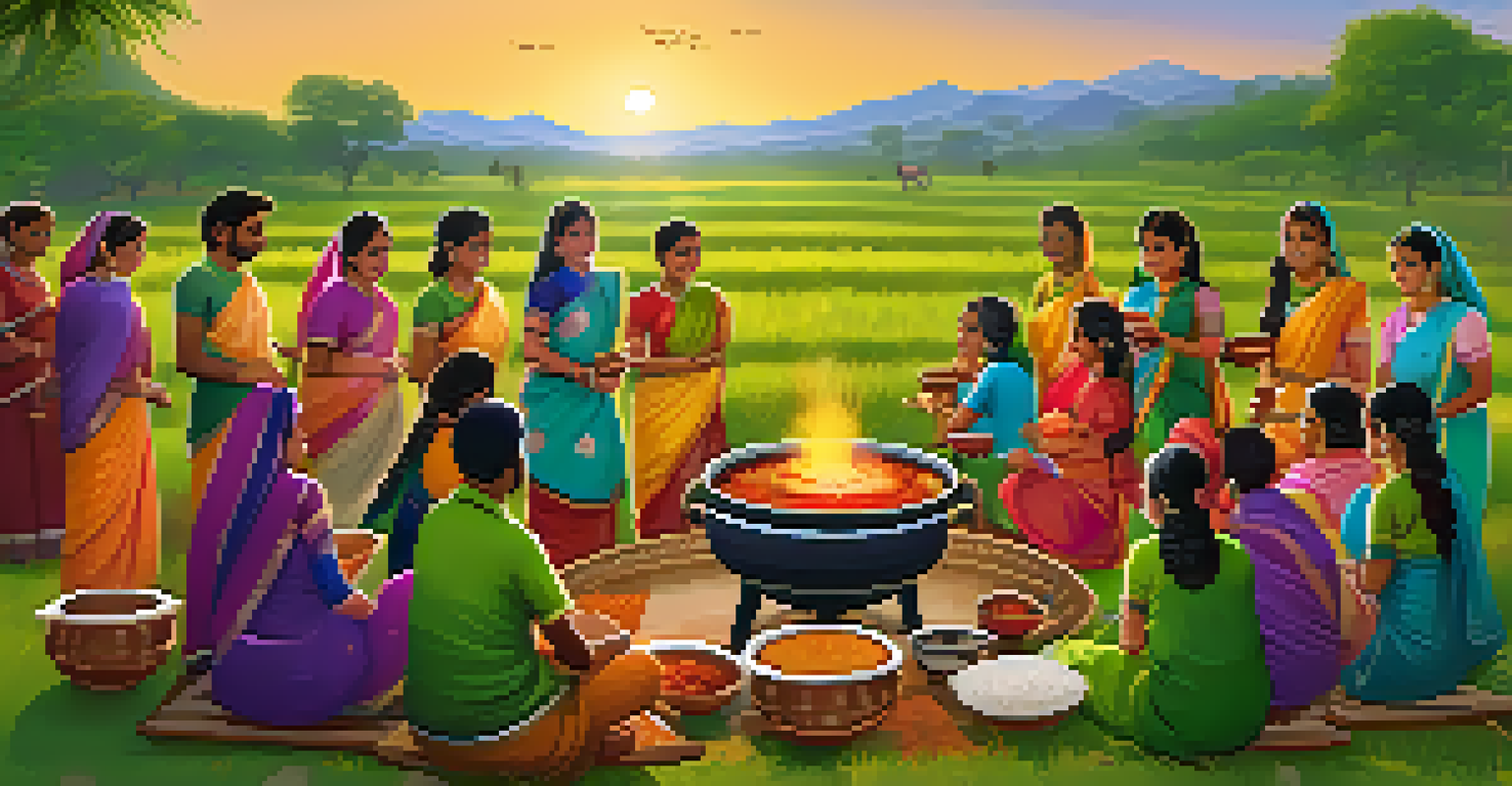Festivals and Food: Celebrating India's Culinary Traditions

Introduction to India's Rich Culinary Traditions
India's culinary landscape is as diverse as its culture, with each region offering unique flavors and dishes. From the spicy curries of the South to the sweet treats of the North, food is an integral part of Indian festivals. This connection between food and festivity brings families and communities together, creating a tapestry of traditions that celebrate the richness of life.
The fondest memories are made gathered around the table.
Festivals in India often revolve around agricultural cycles, religious beliefs, or historical events, which strongly influence the food prepared. For instance, during Diwali, the festival of lights, families whip up a variety of sweets and snacks to share with friends and neighbors. Similarly, Pongal celebrates the harvest with a special dish made from newly harvested rice, symbolizing gratitude and abundance.
As we delve into various festivals, we'll uncover how food not only nourishes the body but also strengthens bonds, reflects culture, and tells stories of generations past. Join us on this delicious journey through India’s culinary traditions in the context of its vibrant festivals.
Diwali: Sweets, Snacks, and Celebration
Diwali, known as the festival of lights, is one of India's most celebrated occasions, marked by joy, family gatherings, and, of course, food. Sweets like laddoos, barfis, and jalebis are prepared in abundance, symbolizing the sweetness of life. Families often gift these delicacies to their neighbors, spreading happiness and camaraderie within the community.

In addition to sweets, savory snacks such as samosas and pakoras play a vital role in Diwali celebrations. These crispy delights are perfect for sharing during festive gatherings, making every bite a celebration of togetherness. The aroma of these dishes wafting through homes signifies the joy and excitement of the season.
Food Unites Communities in Festivals
In India, festivals are deeply intertwined with culinary traditions, bringing families and communities together through shared meals and celebrations.
Moreover, Diwali's culinary traditions vary across regions, showcasing India's incredible diversity. Whether it's the rich mithai from the North or the coconut-infused treats from the South, each dish adds a unique flavor to the festival, making it a true feast for the senses.
Holi: A Feast of Colors and Flavors
Holi, the festival of colors, is not just about vibrant powders and joyous celebrations; it's also a time for delicious food. Traditional dishes like gujiya, a sweet dumpling filled with khoya, are essential during this festival. The preparation of these treats brings families together, creating a sense of unity and excitement as they celebrate the arrival of spring.
Food is our common ground, a universal experience.
During Holi, the streets are filled with people enjoying festive foods, from spicy chaat to refreshing thandai. This wide array of flavors symbolizes the diversity of India and the spirit of togetherness that Holi represents. Sharing food with friends and family enhances the joy of the festival and strengthens bonds between loved ones.
Interestingly, the colors of Holi are often reflected in the food as well. Brightly colored sweets and savory dishes make the celebration visually appealing, reminding participants of the beauty of life and the joy of community. This blend of color and flavor is what makes Holi a truly unique culinary experience.
Pongal: A Harvest Celebration of Gratitude
Pongal, primarily celebrated in Tamil Nadu, is a harvest festival that emphasizes gratitude towards nature. The centerpiece of this celebration is a dish also called Pongal, made from newly harvested rice, lentils, and flavored with ghee, nuts, and spices. This simple yet delicious dish represents abundance and is often prepared in a traditional pot outdoors.
The festival includes rituals that honor the sun god and farm animals, highlighting the importance of agriculture in Indian culture. Families come together to prepare Pongal and share it with neighbors, fostering a sense of community and appreciation for the land. This act of sharing food reflects the core values of generosity and togetherness inherent in Indian traditions.
Diverse Dishes Reflect Regional Culture
Each festival showcases unique regional dishes, highlighting the diverse culinary landscape of India, from sweet treats during Diwali to savory dishes for Eid.
What makes Pongal even more special is the variety of dishes that accompany it. Sweets like sugarcane and jaggery are also enjoyed, adding a touch of sweetness to the celebration. The diversity of flavors during Pongal showcases the richness of Indian culinary heritage, making it a memorable experience for everyone involved.
Eid: A Culinary Feast of Togetherness
Eid is a significant festival celebrated by Muslims, marked by a spirit of community and sharing. One of the highlights of Eid is the sumptuous feast that families prepare, featuring dishes like biryani, kebabs, and sweet treats such as sheer khurma. These meals are not just about nourishment but also a way to express love and hospitality towards friends and family.
During Eid, the act of sharing food takes center stage, with many families inviting neighbors and community members to join in the celebration. This inclusive spirit reinforces social bonds and reflects the values of compassion and generosity that are central to the festival. Every dish shared tells a story of tradition and togetherness.
Moreover, the culinary practices during Eid can vary greatly across regions, showcasing the diverse cultural influences within India. From the spicy flavors of North Indian cuisine to the fragrant dishes of the South, each celebration is a delightful exploration of India's culinary richness, uniting people through the love of food.
Navratri: Fasting, Feasting, and Festivities
Navratri is a nine-night festival dedicated to the worship of the goddess Durga, celebrated with fervor and devotion across India. During this time, many people observe fasting, while others indulge in a variety of vegetarian dishes that are often specially prepared for the occasion. Foods like sabudana khichdi and kuttu ki puri are popular, allowing devotees to enjoy delicious meals while adhering to their fasting rituals.
The festival is not solely about food, as it also involves traditional dances and cultural performances that bring communities together. Feasting becomes a way to celebrate the end of fasting, with elaborate meals being shared among family and friends. This joyful culmination of spiritual practice and culinary delight reinforces the bond of community and shared experiences.
Harvest Festivals Celebrate Abundance
Celebrations like Pongal and Baisakhi emphasize gratitude for nature's bounty, with traditional dishes made from freshly harvested ingredients symbolizing abundance and community spirit.
Interestingly, the choice of ingredients during Navratri is selective, highlighting seasonal produce and regional specialties. This emphasis on fresh, local ingredients not only supports sustainable practices but also enriches the culinary traditions passed down through generations. The vibrant colors and flavors of Navratri meals reflect the festival's spirit, making it a truly immersive experience.
Baisakhi: A Celebration of Harvest and Cuisine
Baisakhi marks the beginning of the harvest season in Punjab and is celebrated with great enthusiasm. This festival is not only a time for farmers to rejoice in their bountiful harvest but also an opportunity to indulge in traditional Punjabi dishes. Foods like sarson da saag and makki di roti are staples during Baisakhi, showcasing the region's agricultural produce.
The joy of Baisakhi is amplified by the communal spirit that accompanies the feasting. Families and friends gather to share meals, dance, and celebrate the hard work that has gone into the harvest. This sense of togetherness and gratitude is reflected in the vibrant atmosphere of the festival, where food serves as a medium of connection.

Moreover, the festivities often include folk songs and dances, adding to the cultural richness of the celebration. The fusion of food, music, and dance creates an unforgettable experience, making Baisakhi a joyful occasion that highlights the importance of community and shared traditions. The culinary aspects of this festival are a testament to the resilience and spirit of the Punjabi people.